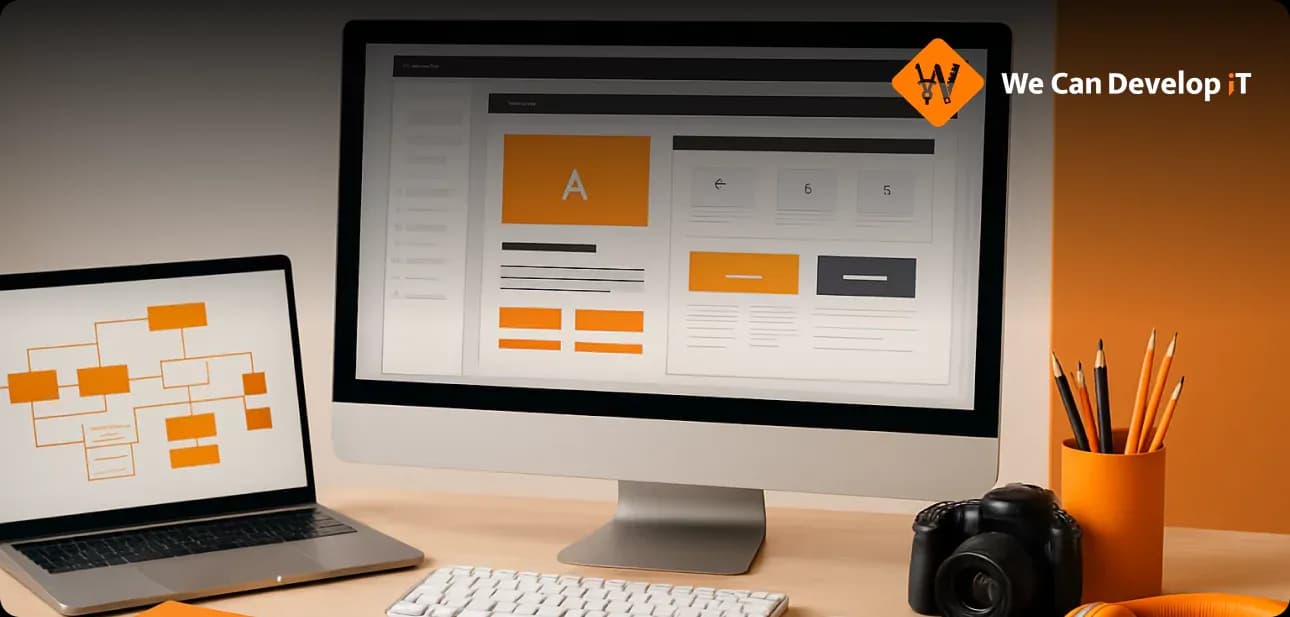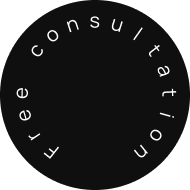Back
Updated at: October 11, 2025
Best Web Design Tools: From Idea to Launch

Modern web design is no longer just about creating pretty mockups. In today’s world, it’s a full ecosystem of interconnected tools that support the entire workflow — from the first idea to handoff and launch. The right toolset can dramatically improve your productivity, whether you're a freelancer, a small studio, or part of a large product team.

Who This Guide Is For
- Freelancers: Discover tools for building great-looking projects quickly and collaborating with clients on a tight budget.
- Small studios (2–5 people): Learn how to streamline teamwork and build consistent design systems.
- Product teams: Get insights into setting up scalable workflows for iterative development.
- Agencies: Explore tools for managing complex, multi-stakeholder projects with high branding demands.
Trends That Shape Web Design in 2025
This year brought major changes:
- AI-assisted design has become a standard — automating repetitive tasks and generating content.
- Microinteractions and scroll-triggered effects require advanced prototyping tools.
- Collaborative design went from “nice-to-have” to essential: teams are remote, clients expect real-time visibility, and the handoff between design and development is now a critical success factor.
Comparison of WEB Design Tools
Team collaborations features
Core Design Tools to Know
1. Figma — The All-in-One Design Platform
Best for: All team types, from solo designers to enterprise
Figma remains the centerpiece of modern design workflows. In 2025, it expanded its AI capabilities and introduced Figma Sites — letting you publish simple websites directly from your designs.
Key features:
- Real-time collaborative editing
- Component system and design tokens
- Dev Mode for smooth handoff
- AI-powered content and layout suggestions
- Integrations with 200+ tools
Pricing (2025): Free (3 files), Pro — $12/mo, Org — $45/mo (up ~20% from 2024)
Use Case: Airbnb’s design team uses Figma to coordinate over 50 designers globally with a unified system of 400+ components.
2. Framer vs Webflow — The Best Site Builders
- Framer is perfect for designers who want total control from layout to live website. It offers a Figma-like interface and powerful no-code animations.
- Webflow is better for developers and complex projects. It offers deeper code access, advanced SEO tools, and enterprise-level features.
Comparison by key parameters:

How to choose:
- Use Framer for portfolios, landing pages, MVPs
- Choose Webflow for full-scale websites with integrations or multilingual content
3. Advanced Animation & Interaction Tools
ProtoPie (macOS + Windows) beats Principle (macOS-only) in versatility, offering logic-based interactions, sensor/voice support, and real-world simulations.
When to use:
- Present complex UI flows
- Test UX scenarios
- Deliver animation specs to developers
Pricing: ProtoPie Pro — $25/mo, Enterprise — $89/mo; Principle — $99 (one-time)
4. AI Tools: Your New Design Assistant
- Relume revolutionizes wireframing and sitemap creation — generate structure in minutes
- Midjourney + ChatGPT help create illustrations and content
- Microsoft Designer offers free AI-based social media visuals
Workflow tip:
Relume → Figma → ChatGPT (content) → Midjourney (images)
5. Documentation & Design Systems
Choose based on team size:
- Notion: for small teams (under 10 people)
- Zeroheight: for mid-size design systems
- Supernova: for enterprise with advanced analytics
Real-world case: Shopify’s design team reduced onboarding time from 2 weeks to 3 days after switching from Confluence to Zeroheight.
6. Project Management: From Idea to Execution
Best options by team size:
- Trello — freelancers and micro-teams ($5/mo)
- Linear — product teams of 5–50 ($8/mo)
- Jira — enterprise teams with complex workflows ($7.75/mo)
Bonus: Linear integrates with Figma to show design status directly in files.
7. Time Tracking & Billing
Toggl remains the go-to for time tracking, now with AI task classification and smart project tagging.
Pricing: Free (up to 5 users), Starter — $9/mo, Premium — $18/mo
Alternatives: RescueTime (auto-tracking), Clockify (budget-friendly for teams)
8. LottieFiles: The New Animation Standard
Lottie replaces GIFs for interactive and lightweight animations. Works across web, iOS, Android, React, and more.
New in 2025:
- AI-generated animations from static images
- Interactive Lottie animations with user input
Budget Planning: Free vs Paid Tools
Suggested stacks:
|
User Type |
Recommended Tools |
Monthly Cost |
|
Student/Beginner |
Figma Free, Trello, Canva |
$0 |
|
Freelancer |
Figma Pro, Framer, Toggl |
~$50 |
|
Small Studio |
Figma Team, Linear, Notion |
~$200–400 |
|
Product Team |
Full stack (Figma + Linear + ProtoPie + Docs etc.) |
~$1000–3000 |
Design Handoff: From Pixel to Code
Modern handoff is no longer just “send the Figma file.” In 2025, the process is more structured and seamless.
Best Practices:
- Figma Dev Mode — auto-generate CSS
- Zeroheight — sync design tokens/documentation
- ProtoPie — export interaction specs
- Linear + GitHub — track development status
Handoff Checklist:
- Components have all states (hover, active, disabled)
- Responsive breakpoints documented
- Animations with easing and durations
- Assets exported in correct formats (@1x, @2x, SVG)
- Interactive prototype accessible
Workflow Templates: From Idea to Launch
Landing Page Workflow:
- Relume → sitemap & structure (30 min)
- Figma → layout & components (4–8 hrs)
- Framer → live site with animation (2–4 hrs)
- Notion → documentation for client (1 hr)
Web App Workflow:
- Figma → research & system design (2–4 weeks)
- ProtoPie → interactive prototypes (1 week)
- Linear → sprint planning
- Zeroheight → system documentation
- Webflow/Code → development & launch
Conclusion: The Future of Web Design Is Now
2025 marked a turning point in digital design:
- AI tools automate repetitive tasks
- No-code platforms empower designers to publish real sites
- Collaboration tools drive success for distributed teams
Final Takeaways:
- Choose tools by purpose, not popularity — freelancers need fewer tools than enterprise teams
- Invest in process, not just software — a well-documented Figma handoff saves more time than a new plugin
- AI assists, doesn’t replace — let Relume, ChatGPT, and Midjourney speed up your work, but keep the creativity yours
- Scale smart — start with essentials and grow your stack as your needs evolve
Modern web design is a creative and technical symbiosis. The right tools free you to focus on what matters: solving real problems through meaningful digital experiences.
Summary:
Modern web design encompasses a comprehensive ecosystem of interconnected tools that enhance productivity from concept to launch. It caters to various users, including freelancers, small studios, product teams, and agencies, each with distinct needs and workflows. Recent trends highlight the establishment of AI-assisted design as standard, the necessity for advanced prototyping due to rising microinteractions, and the critical importance of collaborative design in remote environments. Figma stands out as a versatile design platform, known for its real-time editing capabilities and new features like Figma Sites for direct publishing. Site builders such as Framer and Webflow cater to different project complexities, with Framer suited for simpler designs and Webflow for more intricate needs. Animation tools like ProtoPie offer advanced interaction capabilities, enhancing the design process. AI tools have changed wireframing and content creation, allowing for quicker project development. Documentation and project management tools are essential for streamlining workflows, and time tracking remains crucial for effective billing. The handoff from design to development is now more structured, emphasizing the need for well-documented processes. Ultimately, the future of web design lies in a balanced integration of creativity, technology, and collaboration tools that prioritize user needs and project goals.
Read also:
webdesigntools
figma
framer
webflow
protopie
notion
zeroheight
supernova
aiindesign
relume
chatgpt
midjourney
toggl
lottiefiles
uidesign
uxdesign
productdesign
freelancetools
designworkflow
designsystems
projectmanagement
frontendhandoff
nocodetools
collaborativedesign
designtips
webdesigntrends
digitalproductdesign
designstack
designprocess
interfaceanimation
designforstartups





